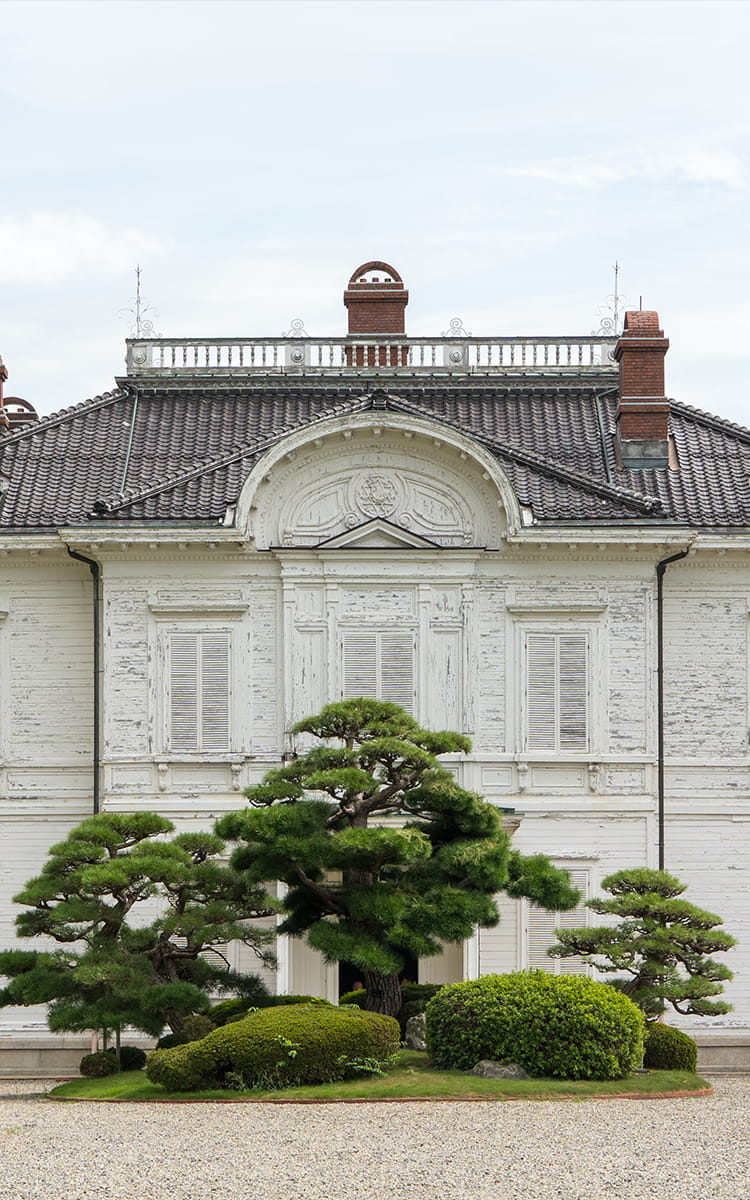
Overview
During the Edo period (1603–1868), Tottori City ranked 12th in financial power among approximately 300 domains throughout Japan. The following decades, however, brought a series of hardships to the city.
Immediately after the Meiji Restoration (1868), Tottori Prefecture (the former Tottori domain) was temporarily merged with Shimane Prefecture for political reasons. This merger caused the once prosperous castle town of Tottori to decline rapidly. Furthermore, due to geographical factors, the San’in region (where Tottori City is located) lagged behind other regions in the expansion of railroads, roads, and other transportation networks. This slower development hindered modern economic progress. Furthermore, Tottori City suffered from numerous disasters. In addition to repeated severe floods, a major earthquake (magnitude 7.2) in 1943 caused serious damage to the city center, requiring considerable time and effort for recovery. These natural disasters shook the foundations of the residents’ lives and temporarily stalled Tottori City’s development as a modern city. Moreover, in 1952, a fire of unknown origin destroyed a majority of the city center, causing further strife for residents of Tottori. Even as it faced hardships like political meddling, economic difficulties, and repeated disasters, Tottori City worked to overcome these challenges in its development as a modern city.
Tottori City flourished from the Sengoku period (15th–16th centuries) through the Edo period. Despite a subsequent period of decline, the city’s gradual modernization is evident in its valuable cultural properties, such as Jinpukaku and the Old Mitani Headwaters Reservoir and Waterworks Facility.
Go here to try out our digital metaverse content
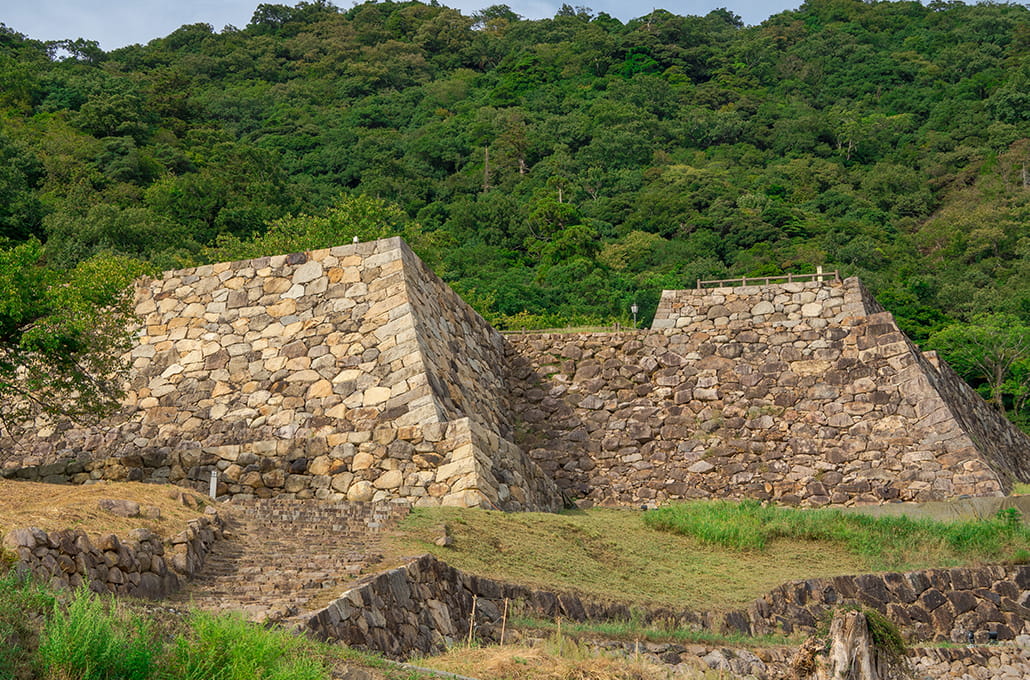
Tottori Castle, originally built in the 16th century atop a steep mountain, was renowned as one of the most impressive in all of Japan. The famous Japanese military commander Oda Nobunaga is even said to have sung its praises.
Historically, the castle was the site of a famous siege by Hashiba Hideyoshi (later known as Toyotomi Hideyoshi), a retainer of Oda Nobunaga. In the 17th century, under the rule of Ikeda Mitsumasa, the castle was expanded to the base of the mountain and was valued at 320,000 koku. The same artisans who built Himeji Castle, a National Treasure of Japan, also worked on Tottori Castle, leading it to be sometimes referred to as “Himeji Castle’s little brother.” In the Ninomaru, the outer citadel where the lord’s palace was located, the San’in region’s first three-story, sotogata-style yagura (turret) was built. It stood for many years as a symbol of the domain and a source of pride for the locals.
The Tottori-Ikeda family continued to be influential after Mitsumasa, particularly during the Meiji Restoration (1868). The 12th head of the family, Ikeda Yoshinori, played a significant role, leading the construction of high-performance reverberatory furnaces and serving in the new government’s army during the Boshin War (1868-1869). Although many castles were demolished after the Meiji Restoration, military necessity led to the preservation of many of Tottori Castle’s buildings. However, as public order stabilized, the army withdrew, and the castle’s trademark turrets were dismantled. Currently, restoration work is underway to restore the castle buildings to their original appearance.
Taikoganaru is the site of a large military headquarters built in 1581 by Hashiba Hideyoshi on a neighboring mountain during his siege of Tottori Castle. The long, three-trench-deep defensive line is particularly impressive.
Designated as a National Historic Site and selected as one of the Top 100 Japanese Castles, the ruins of Tottori Castle illustrate the evolution of Japanese castles from the medieval to the early modern and modern eras.
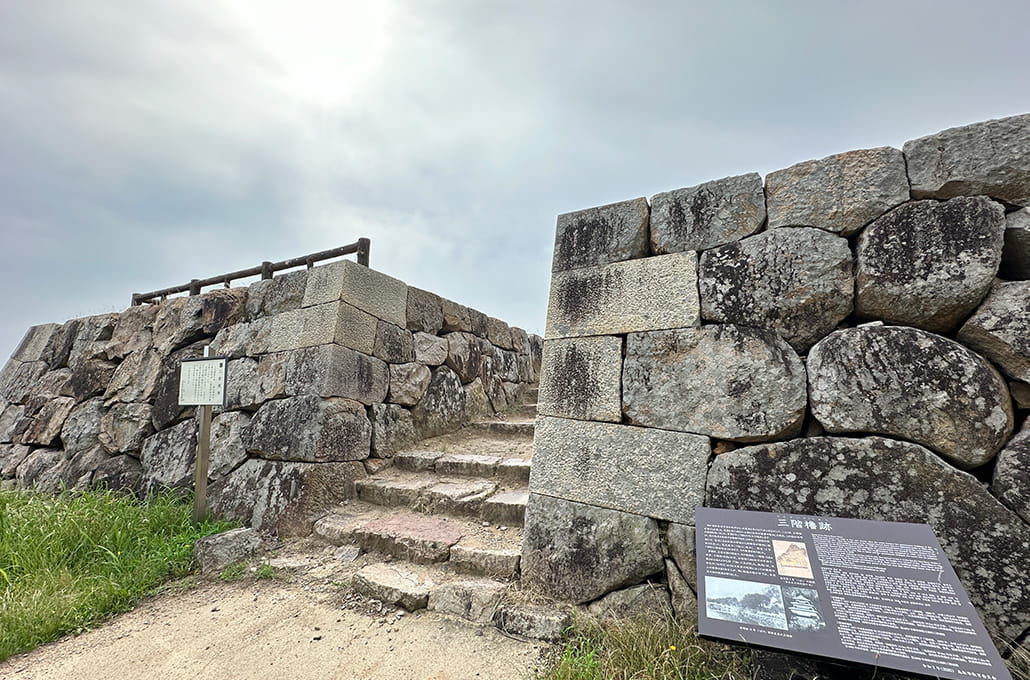
Site of the Ninomaru three-story turret that was the symbol of the castle
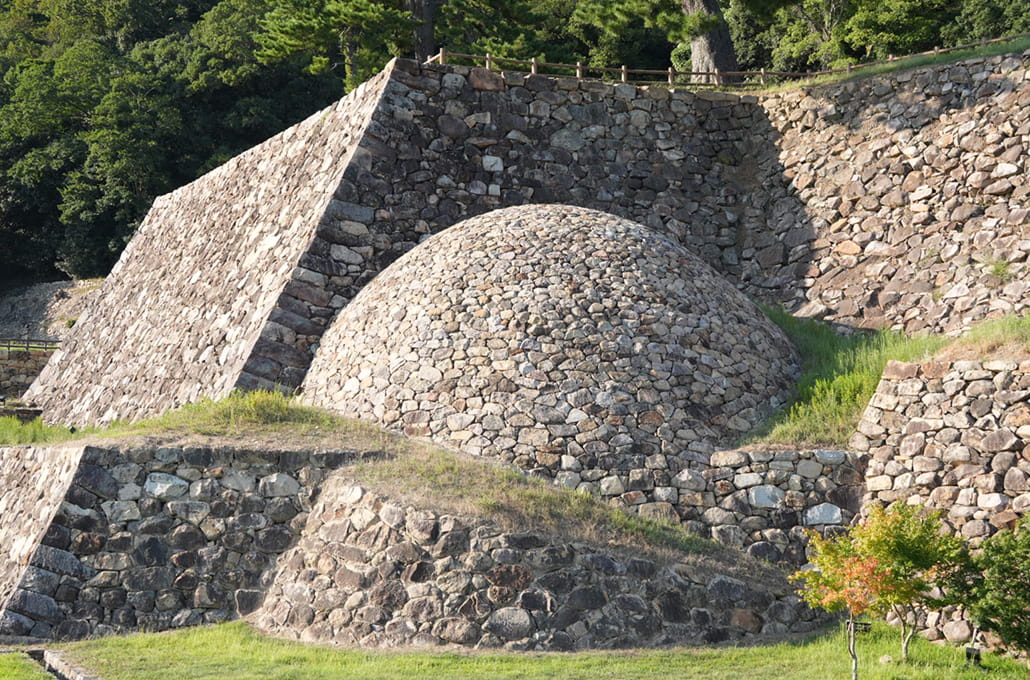
The Tenkyumaru spherical stone wall, a feature unique to Tottori Castle
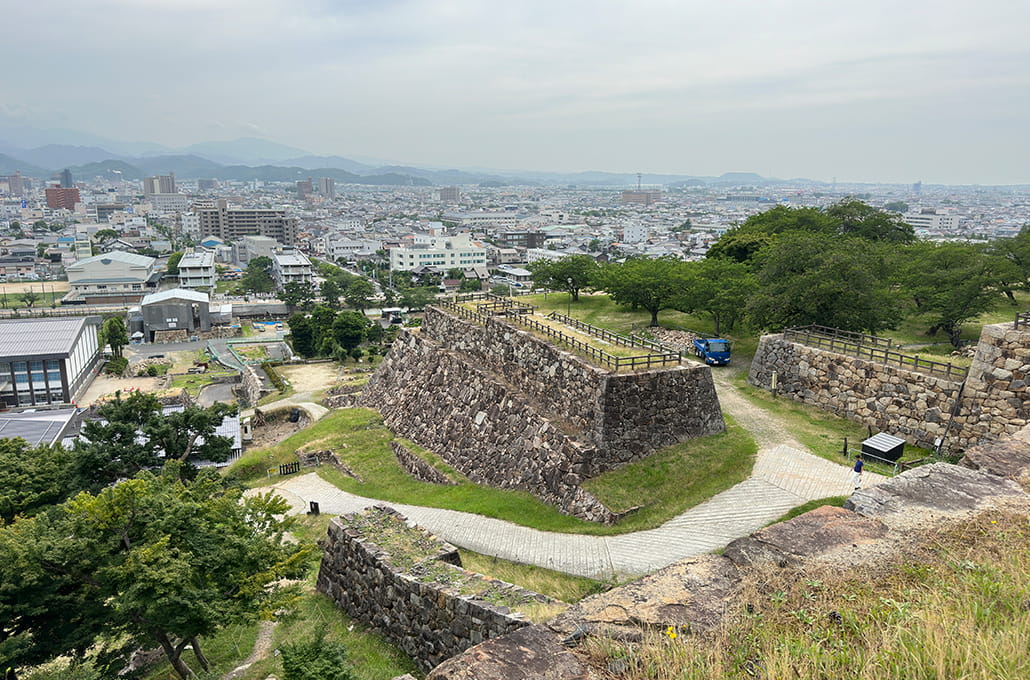
The Hishi Yagura turret stood atop the stone wall in the center
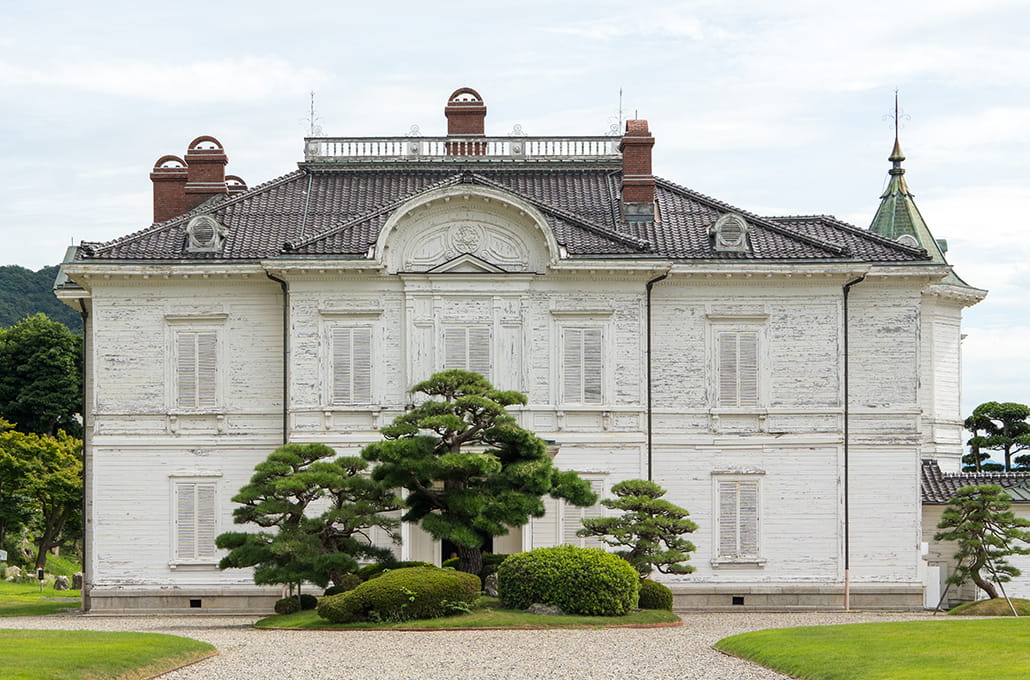
Jinpukaku stands as a symbol of Tottori City’s modernization and played an important role in the region’s development. It was built in 1907 by Marquis Ikeda Nakahiro, the former lord of the Tottori domain, to serve as a lodging for the Crown Prince (later Emperor Taisho) when he visited the area. It is the only authentic Western-style building in the San’in region.
The architectural style of Jinpukaku reflects the progress of Western building techniques during the Meiji era. The design was overseen by Dr. Katayama Tokuma, the designer of Akasaka Palace (a designated National Treasure of Japan).
The construction of Jinpukaku was accompanied by a dramatic acceleration in the development of infrastructure, such as electricity and telephone service in urban Tottori and the laying of railroads throughout the prefecture. These advancements significantly contributed to the city’s modernization. The construction of such large, authentic Western-style buildings in regional cities was highly important and symbolized the spread of modernization and technology outside of Japan’s major population centers.
Following a period of decline after the Meiji Restoration of 1868, the construction of Jinpukaku came to symbolize the modernization of Tottori City and contributed greatly to its development.
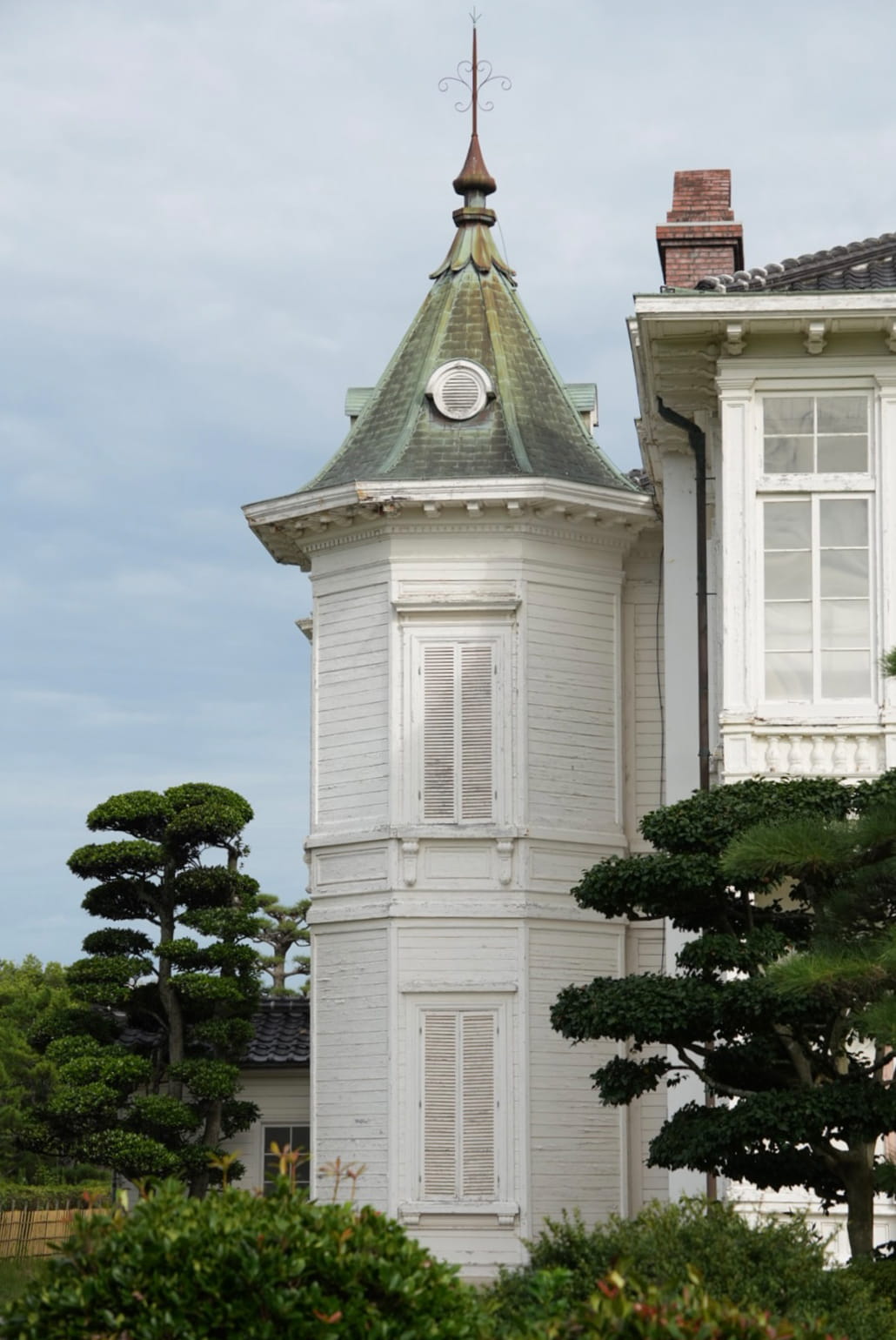
The octagonal stairwell is a distinctive feature visible from the exterior
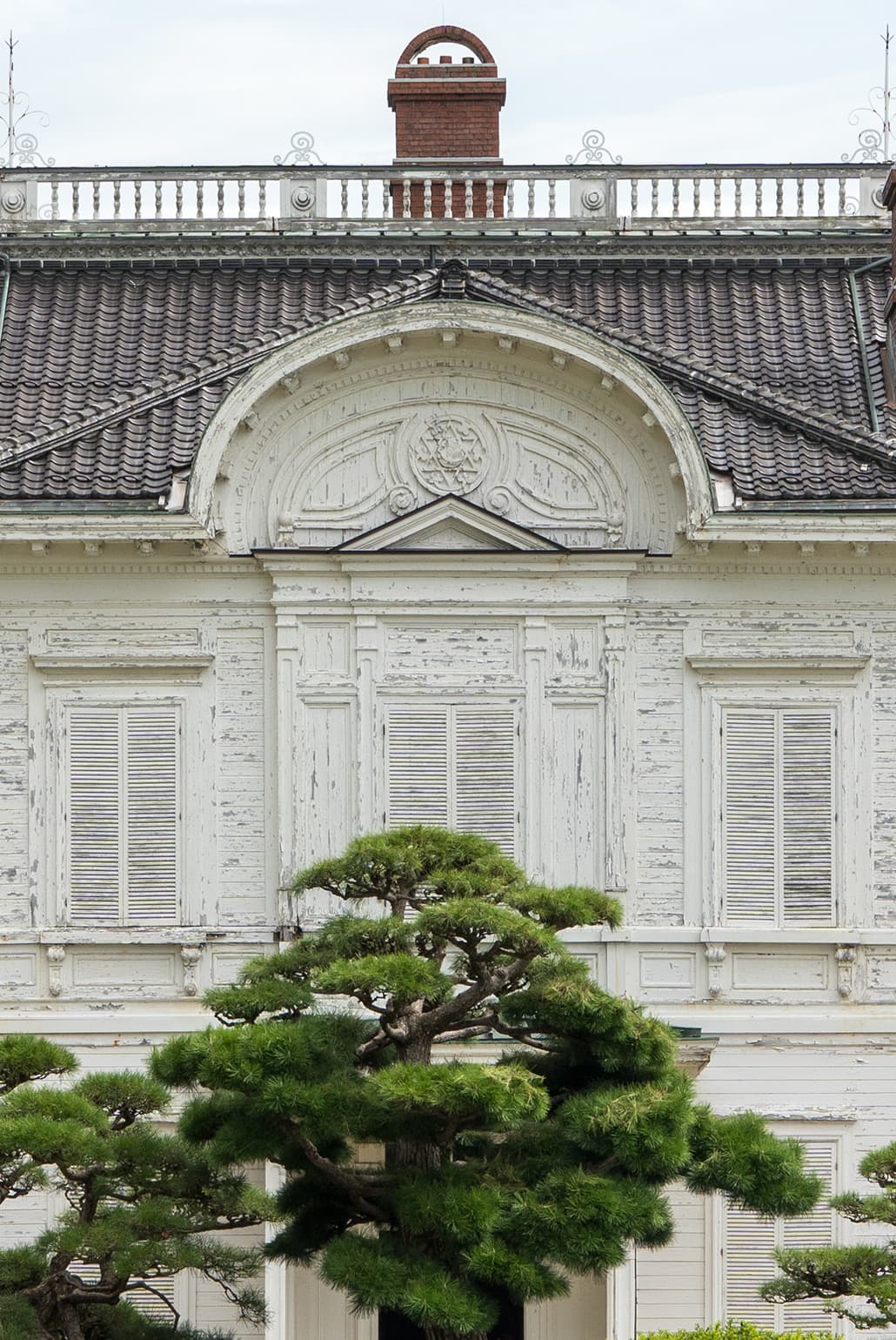
The front-facing roof is adorned with a segmental pediment
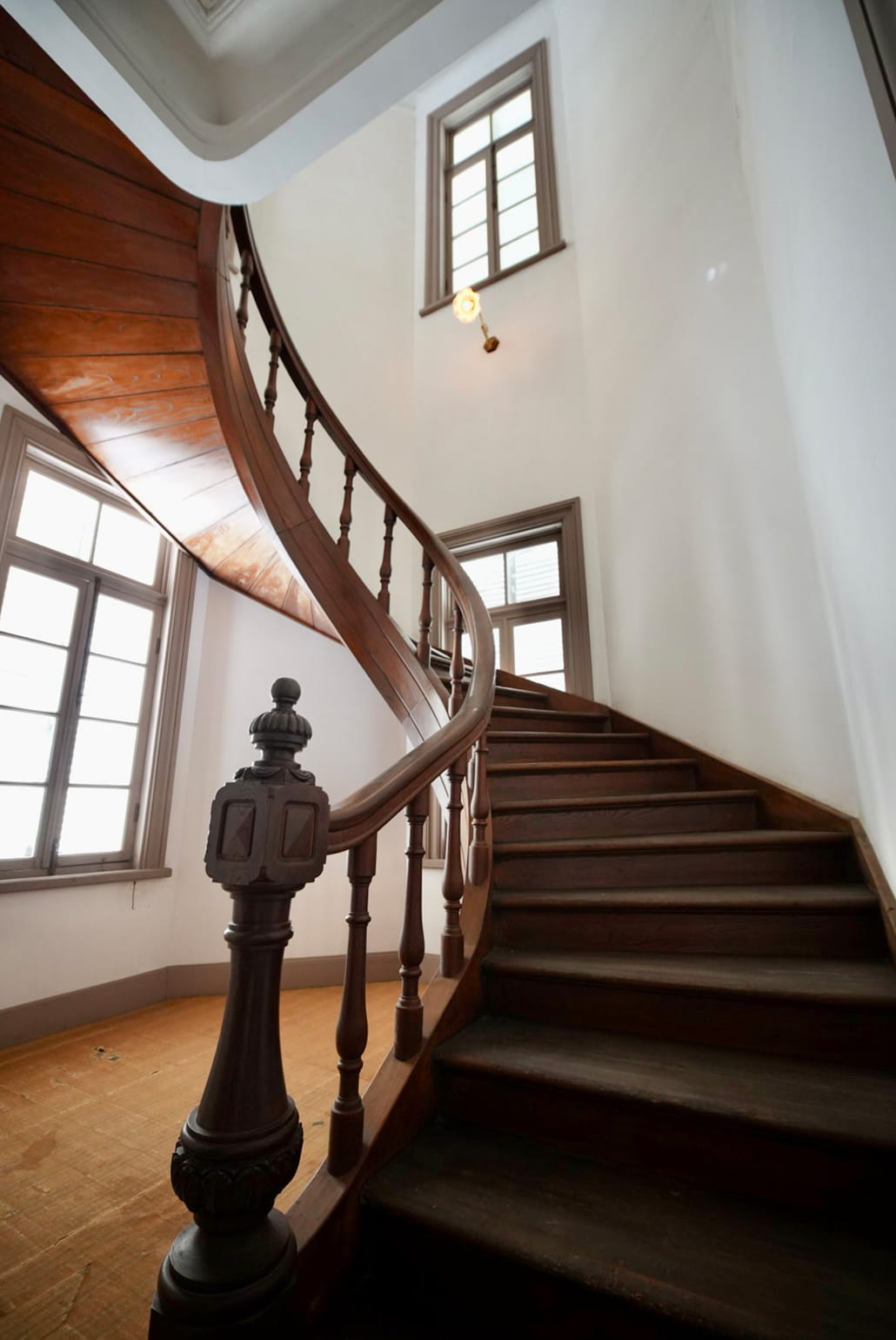
A wooden spiral staircase without support columns

The Old Mitani Headwaters Reservoir and Waterworks Facility serves as an important symbol of Tottori City’s modernization. It was designed by Dr. Mita Zentaro, the first Japanese engineer to design public water and sewage systems. Construction began in 1913 and was completed in 1915, becoming the first modern waterworks in the San’in region.
However, tragedy struck three years after its completion. Torrential rains from a typhoon caused the earthen dam to collapse, washing away a nearby settlement. Learning from this disaster, Dr. Sano Tojiro, the civil engineer who constructed Japan’s first concrete dam, took charge of the restoration and built the Mitani Dam, a sturdy concrete dam that stands to this day. From then until 1992, the water produced at the facility served as drinking water and was used for steam locomotives and in factories, thereby contributing to the region’s development for over half a century. Although decommissioned, the facility’s Taisho era (1912-1926) water supply system remains intact and was designated a National Important Cultural Property in 2007. Today, it offers visitors an insightful glimpse into the region’s history.
Nestled in the mountains close to the city center, the site offers beautiful scenery throughout the year, from cherry blossoms and summer fireflies to autumn leaves and snowy winter landscapes. Though no longer operating as a waterworks facility, it remains an irreplaceable part of the region and is evidence of the passion and accomplishments of those who came before.
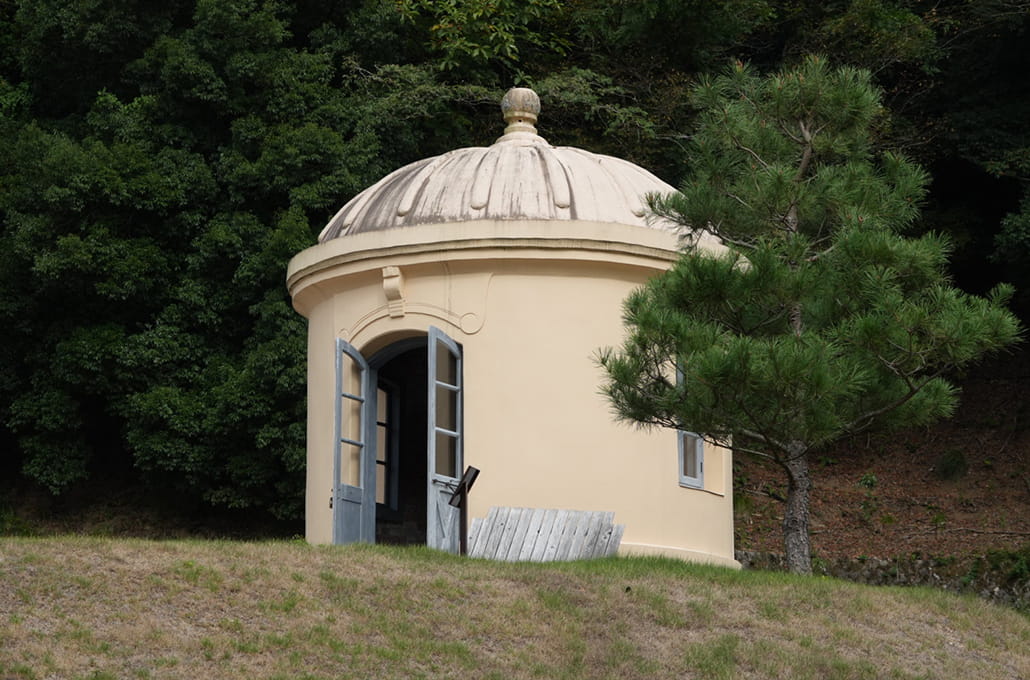
A junction well with a dome-shaped roof
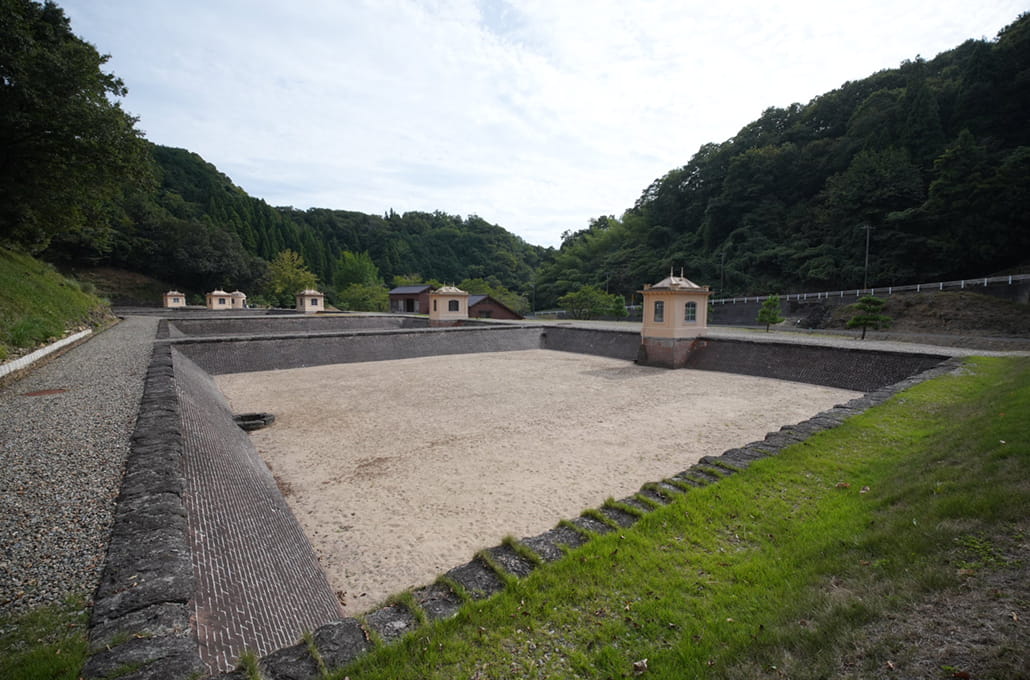
Water from the reservoir is held in five filtration pools
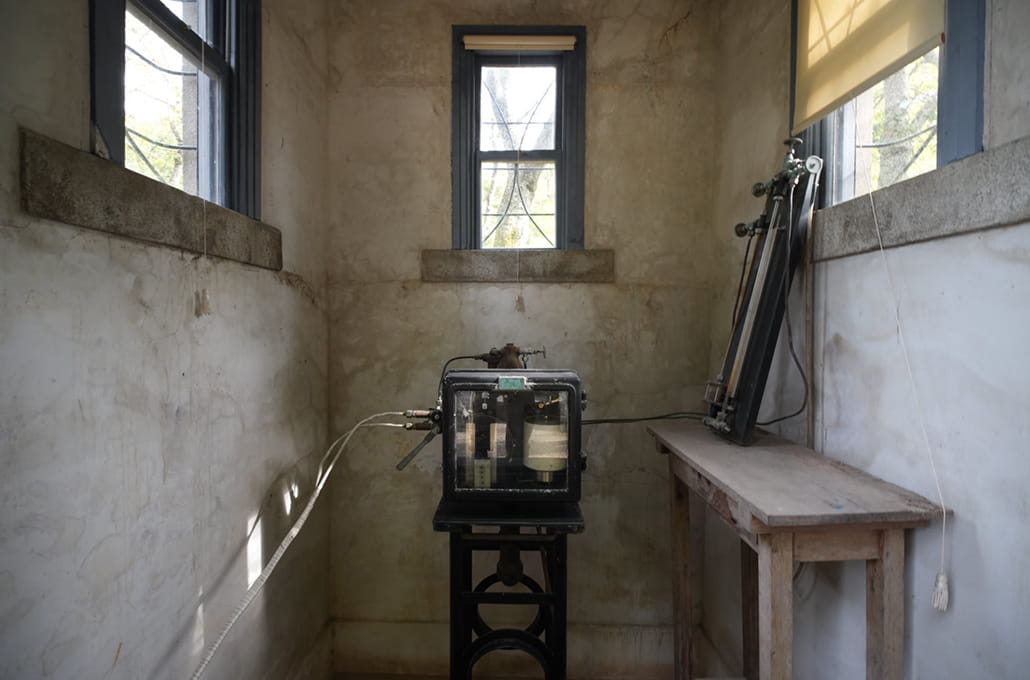
The flow meter room still houses the original measuring equipment

令和6年度 文化資源活用事業費補助金(文化財多言語解説整備事業)